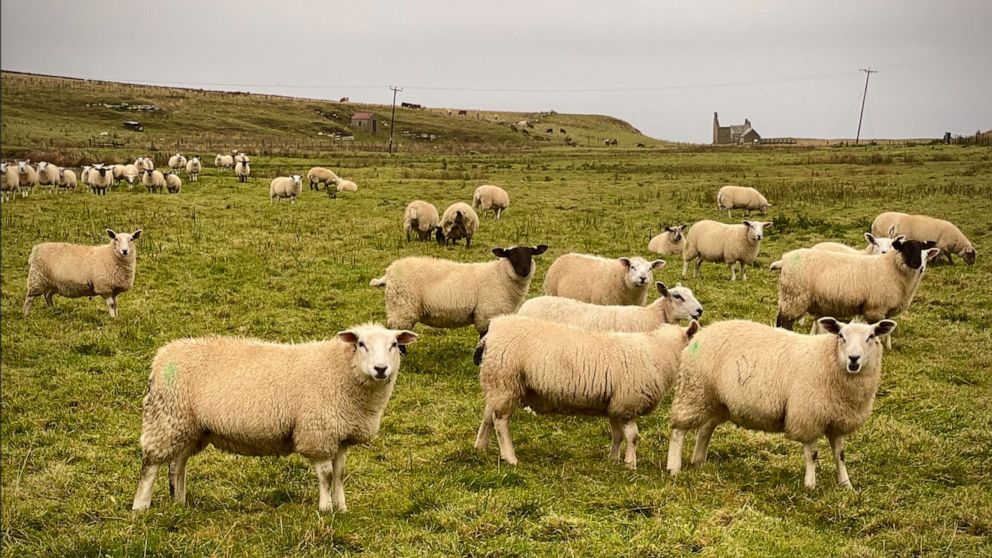
STRATHSPEY, Scotland — As BrewDog co-founder Martin Dickie trudged through his newly-acquired 9,000 acres of muted amber and jade moss, the Aberdeenshire native explained what makes Scotland’s peat special — and why global corporations are investing in peat in the first place.
“It’s a hundred-year project,” Dickie told ABC News during an interview at Kinrara Estate in Kinrara, Scotland. Named the Lost Forest, this plot of land is undergoing an ecological makeover since the craft brewery bought it to restore.
Usually evoked as an unfavorable metaphor, swampy wetlands have long borne a reputation for mucky inhospitality. Though peat bogs hardly conjure up glamorous images of rainforests or oceans, these waterlogged, carbon-packed ecosystems could be key to offsetting adverse impacts of climate change.
Peatlands, composed of partially decayed plant matter, make up about 3% of Earth’s land surface but store 30% of all the planet’s soil carbon. Rotting peatland gives off carbon dioxide, meaning, healthy peat is better for the planet.

The Highland Clearances, when proprietors forced the eviction of inhabitants of Scotland in favor of sheep farming from 1750 to 1860, explains the echoes of historical trauma that some locals feel when millionaires and businesses buy out the land, said research associate Magnus Davidson on Monday, Oct. 24, 2022.
ABC News / Riley Farrell
Scotland — which holds about 140 years of the nation’s greenhouse gases — also offers lucrative government subsidies for private owners of bogs with deep pockets. Businesses, like Dickie’s beer company, and the Scottish government are noticing peat’s potential. The government is covering 80% of land restorers’ expenditures.
Back in 2012, the Scottish government began the Peatland Action Program, funding land managers who hoped to restore peat. Last December, 638 Scottish forests were registered with the Woodland Carbon Code, a national scheme that allows the land’s owners to sell carbon credits, in which the carbon dioxide absorbed by new trees is sold to companies to offset their carbon emissions.
Other climate-savvy business owners buying up Scotland, sometimes given the moniker of “green lairds” by locals, include Asos multibillionaire Anders Povlsen, life insurance companies and private equity funds.

Since Scotland hosted COP26 in 2021, the country’s tourism agencies and economic organizations have teamed up to make Scotland’s tourism sector a global leader in the race to net zero. Picture of ABC News’ Maggie Rulli doing an interview taken on Monday, Oct. 24, 2022.
ABC News / Riley Farrell
Some environmental experts argue carbon credits bring corporate solutions to the climate crisis. Since the Scottish government puts a monetary value on carbon reductions, carbon credits lure private money to nature restoration projects.
Dickie is part of the new generation of Highland landowners, snapping up rural estates in the name of the climate and profit.
“It’s only through the person with the dollar to spend that can make the biggest change,” said Martin. “They decide to spend where their money will make the biggest difference.”
Land ownership in Scotland is distinctly unregulated, allowing moguls to buy as many acres as they want, according to University of the Highlands research associate Magnus Davidson. The few people who do own land essentially have more economic clout over the people who actually live on it, Davidson added.

Since 80% of Scotland’s peatlands are degraded, craft beer company co-founder Martin Dickie explains BrewDog’s century-spanning plan for restoring peatland in the Lost Forest on Sunday, Oct. 23, 2022.
ABC News / Riley Farrell
“Land inequality, wealth inequality,” Davidson told ABC News.
Since the Scottish market has heated up with public interest, land prices have increased exponentially, Davidson added. The “green rush” is already making money for businesses invested in climate initiatives.
Scotland is set to be a leader in eco-tourism, according to environment journalist at National Geographic Sarah Gibbens, which further leverages privatization to fight climate change. National Geographic selected the Scottish Highlands for its iconic “Best in the World” list because of the country’s efforts to rewild its land in pursuit of its climate goals, replanting vanished species and restoring peat. Scotland’s peatland conservation is sustainable and exciting for the future, Gibbens told ABC News.
“When tourists go to Scotland, they’re helping stimulate the local rewilding economy, which will make Scotland even more beautiful than it is already,” said Gibbens.